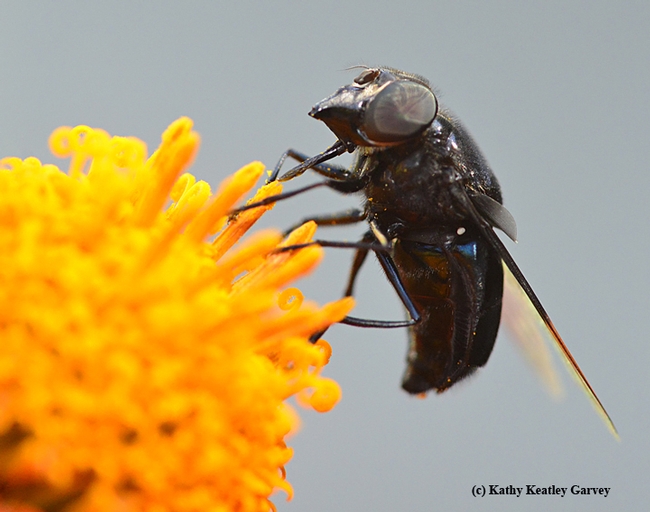Hide the cactus! There's a Mexican cactus fly in our midst.
A large black fly hovers over a Mexican sunflower (Tithonia) in our bee garden and then drops down to sip some nectar. At first glance it looks like a carpenter bee but this one hovers like a syrphid fly, aka flower fly or hover fly.
"Hover fly," I say.
Entomologists Martin Hauser, Lynn Kimsey and Robbin Thorp quickly identified the critter.
Hauser, senior insect biosystematist with the Plant Pest Diagnostics Branch of the California Department of Food and Agriculture, says it's in the genus Copestylum (with over 350 species in the new world) and figured it to be the species, mexicanum, commonly known as the Mexican cactus fly.
Said Lynn Kimsey, director of the Bohart Museum of Entomology and professor of entomology at UC Davis: "Nice, this is actually a kind of syrphid flower fly, better known as a cactus fly. The larvae breed in rotting cactus tissue."
Native pollinator specialist Robbin Thorp, emeritus professor of entomology, also figured it to be a Mexican cactus fly, Copestylum mexicanum. "It's commonly known as a cactus fly (Syrphidae, Tribe Volucellini). "It used to be in the genus Volucella, But now it's in the genus Copestylum."
This fly is not small. It's about 3/4 of an inch long. It lays its eggs in rotting plant material "and they really like rotting cacti," Hauser commented. "As far as I know, they only go into dying cacti and do not attack healthy cacti…. But there is actually not much known about their biology."
The resident cacti expert at our house is worried, showing his best prickly pear expression. He quickly canvasses the yard. Whew! No rotting cacti. All thriving and in good health.
So far, so good...
Attached Images:


